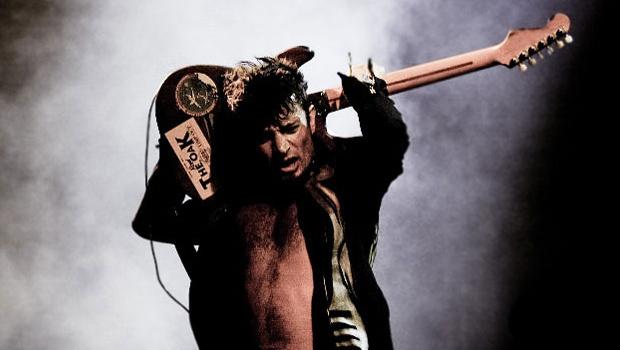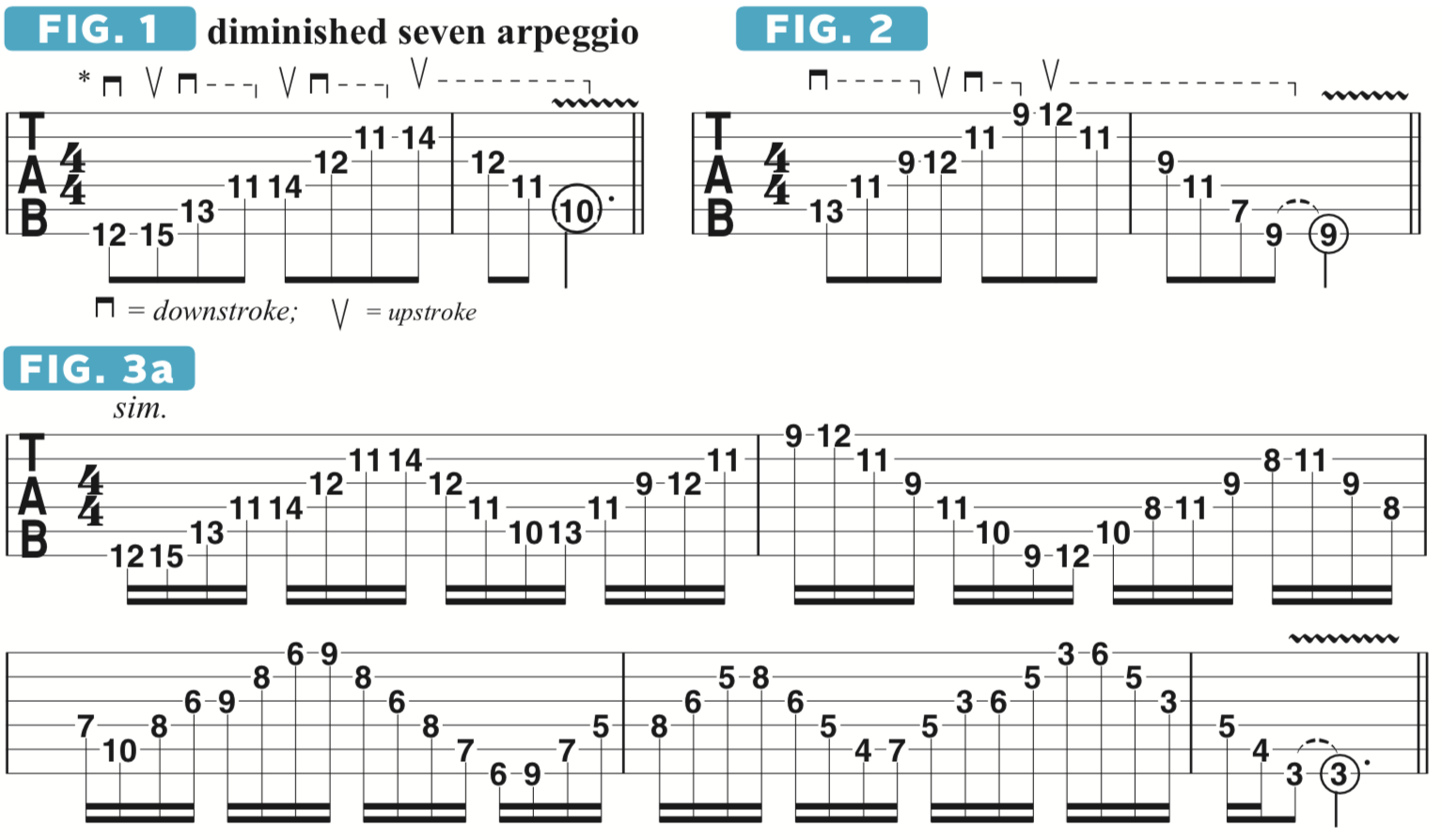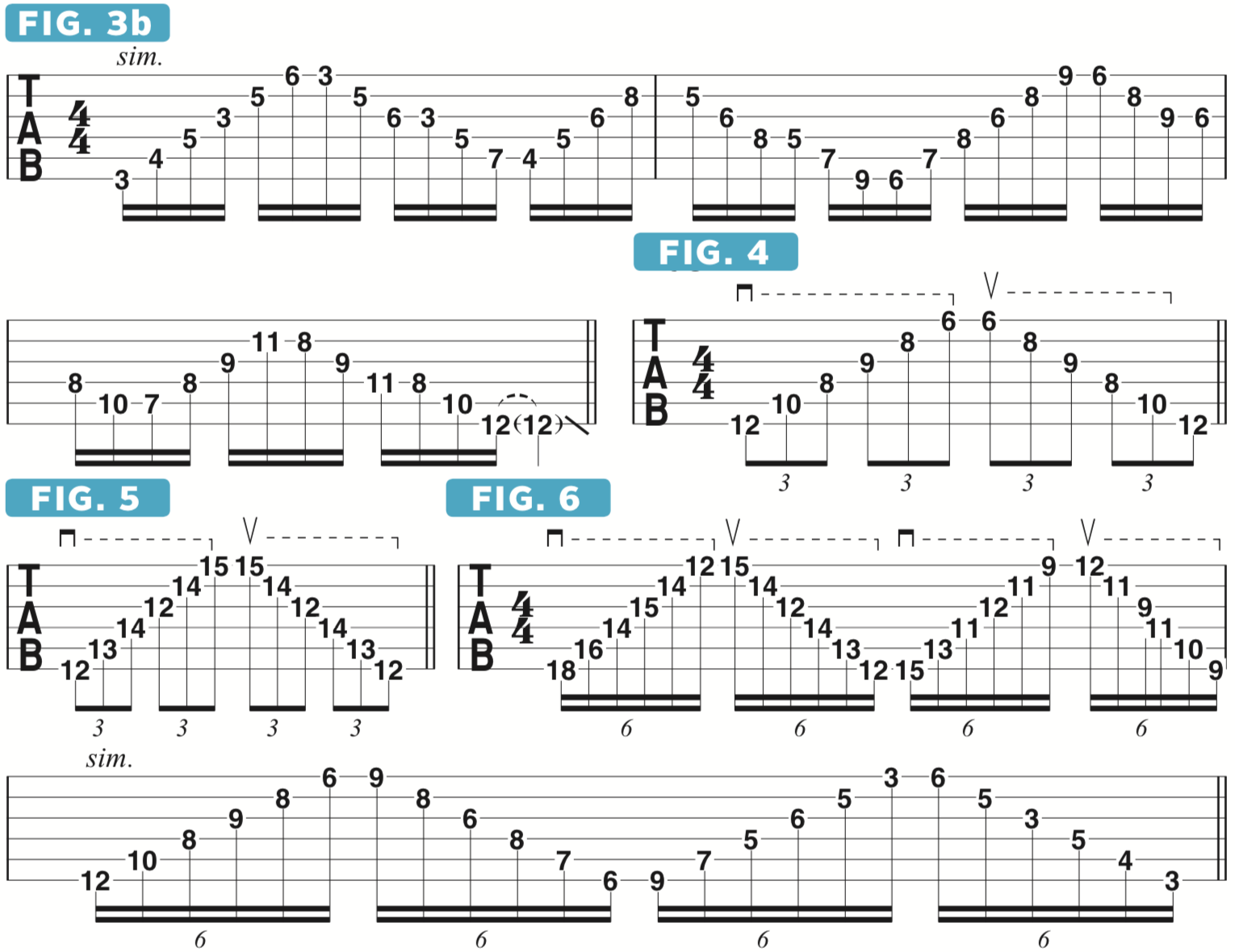Expanding Diminished-Seven Arpeggio Shapes Across the Fretboard
Learn some new shapes that work across great stretches of the fretboard in diverse, expansive ways.

Last month, I demonstrated a handful of ways to execute fast melodic bursts based on diminished-seven arpeggios. In doing so, I wanted to lay the groundwork for incorporating these ideas into solos rooted primarily in other sounds, such as minor pentatonic, the blues scale, minor modes and so on.
This month, I'd like to examine other ways to play an E diminished-seven arpeggio (E G Bb C#). In doing so, I'll introduce and detail new shapes that work across greater stretches of the fretboard and in more diverse, expansive ways.
Whenever I put together a solo, I want to be able to access the entire fretboard and do so in a manner that feels natural and easy. A good way to do this is through diminished-seven arpeggios, performed with wide fret-hand stretches and sweep picking, using them in ways that encourage positional shifts up and down the fretboard. As you will see when you play through these runs, many of the sweep shapes are simply repeated higher or lower as the lick progresses. This is because diminished-seven arpeggios are symmetrical and can be moved up and down the fretboard in increments of three frets, or a minor third, and will sound in the same key.
Figure 1 is a pattern that begins ascending and ends descending. On the way up, I play single notes across the A, D and G strings, and then the D, G and B, ending with a descending reverse rake across the middle four strings. The twist falls in that final descending passage: instead of progressing in intervallic twists of a minor third, as the line begins, I end with notes that are three whole steps, or a tritone, apart, which creates a completely different sound.
The next pattern, Figure 2, is intended to flow from Figure 1. I begin on the A string, ascending in minor thirds and then descending in tritones, as I had done one in Figure 1. When moving from ascending to descending patterns, be keenly aware of your pick-hand motion, and strive for economy of movement and absolute control.
Now let’s combine these two shapes and then move each pair down the fretboard in shifts of a minor third to create a much longer run, as demonstrated in Figure 3A.

If we invert the forms—start by ascending with tritones, followed by descending in minor thirds—we get Figure 3B, which, as you will see, is much more challenging to play.
Another twist is to use rakes that move up and down across all six strings. In Figure 4, I play the standard diminished-seven shapes by dragging the pick across all of the strings in either a downward motion (for ascending runs) or upward motion (for descending runs).
Figure 5 offers a tritone-based version of this idea, and Figure 6 combines the two different shapes, as played across all six strings. Remember to work slowly through these runs, as both the fretting and the picking articulation pose distinct coordination challenges.

Get The Pick Newsletter
All the latest guitar news, interviews, lessons, reviews, deals and more, direct to your inbox!
"Upgrading from your entry-level acoustic opens the door to an entirely new world of tonewoods, body shapes, and brands": 6 signs it's time to upgrade from your first acoustic guitar
"I'm past my prime": 5 common excuses for not learning the guitar – and 5 body and mind-boosting reasons you should









![Joe Bonamassa [left] wears a deep blue suit and polka-dotted shirt and plays his green refin Strat; the late Irish blues legend Rory Gallagher [right] screams and inflicts some punishment on his heavily worn number one Stratocaster.](https://cdn.mos.cms.futurecdn.net/cw28h7UBcTVfTLs7p7eiLe.jpg)
